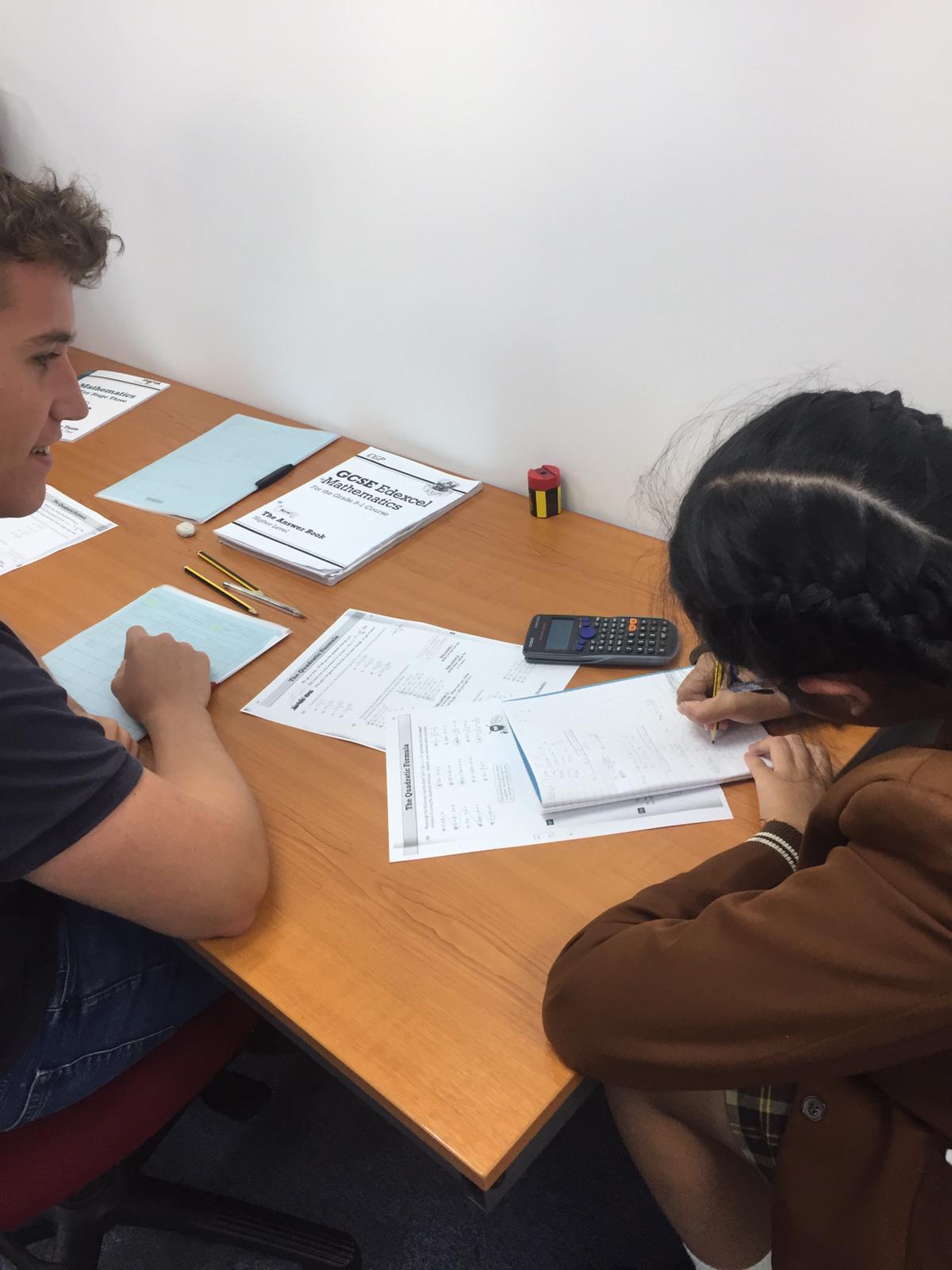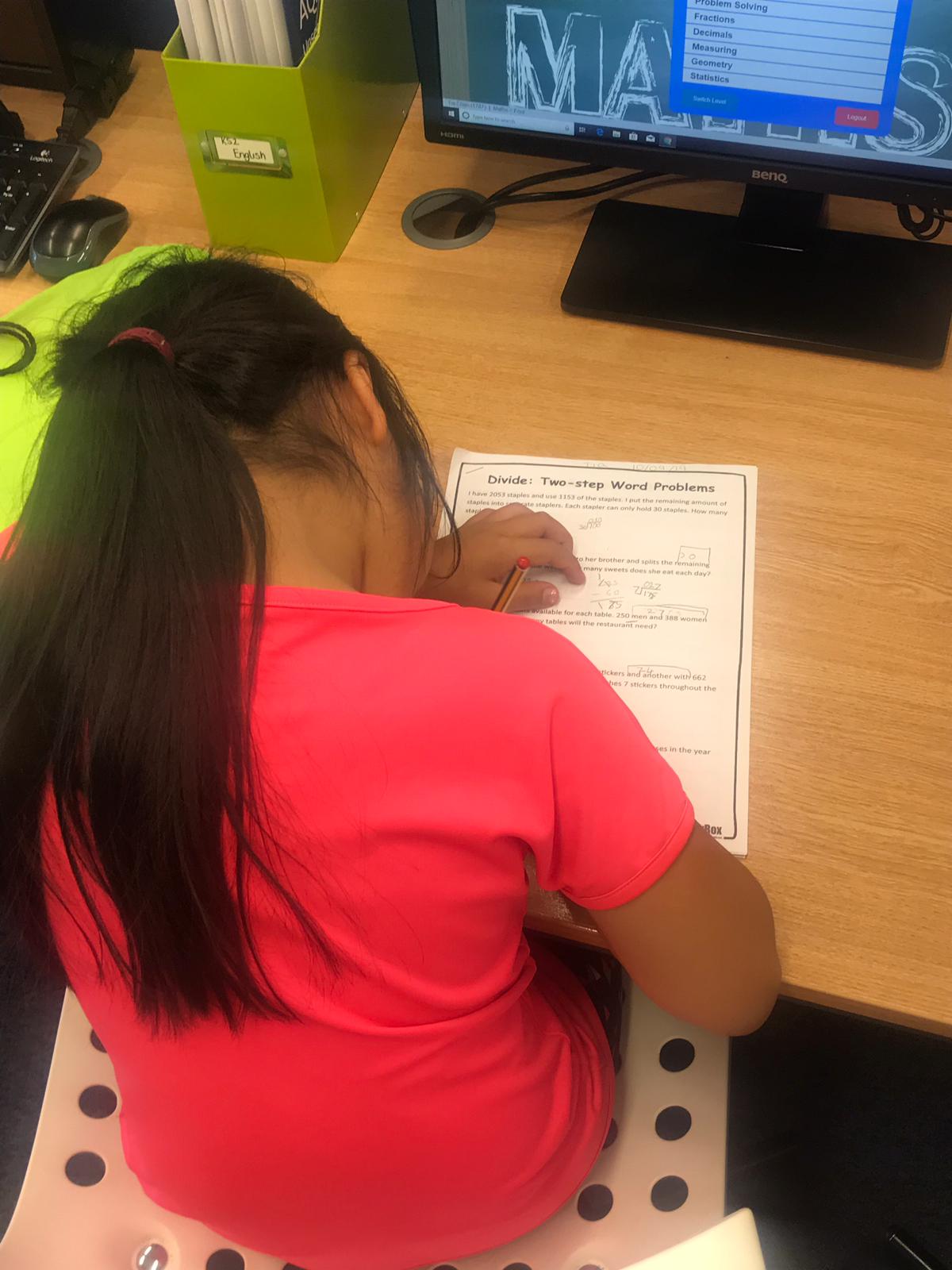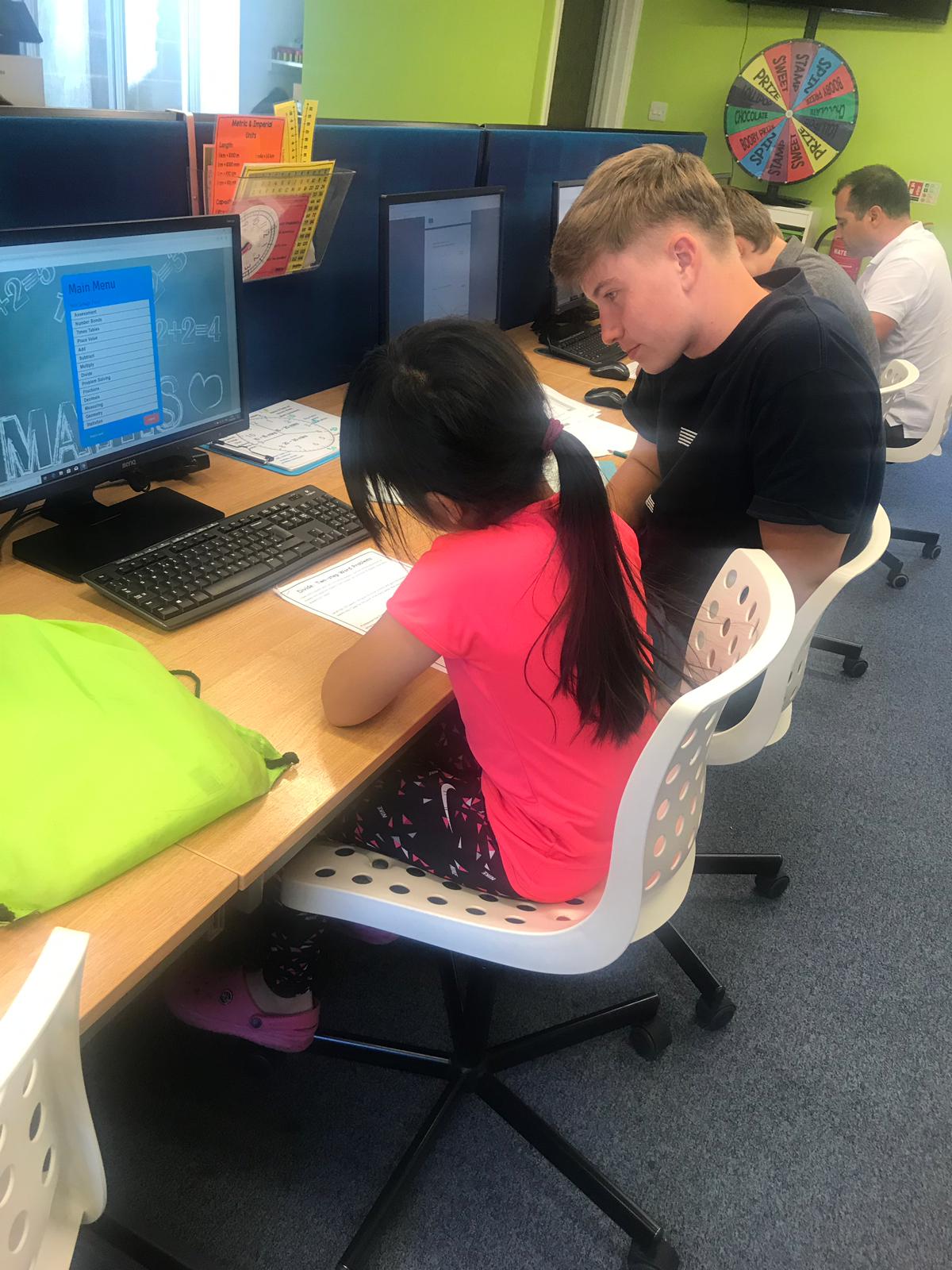7 Educational skills to teach your child

Whilst many parents are spending valuable time at home with their children, why not try to teach them those all-important life skills.
Life skills will benefit children later in life, so it could be useful to implement these early on.
They will teach your child valuable qualities, including being independent, taking care of themselves and learning.
According to Ellen Galinsky’s Mind in the Making there are 7 important life skills:
-
Focus & Self-Control
- Children pick up habits and routine from a young age. So why not teach them how to focus and have self-control.
- Focus is to do with being alert and devoting attention to one task at a time. You can help to improve your child’s focus by dedicating time for them to complete their work. This means they can use this amount of time to concentrate on what needs to be completed in that timeframe.
- Self-control is about willpower and being aware of your own actions.
- Ways to practice this can be teaching children to avoid temptation, for example limiting time on electronic devices like tablets or watching television. This will teach children that these are a privilege.
-
Perspective-talking
- This is about encouraging children to think from different viewpoints. By considering multiple perspectives asides from their own, they can gain an all-round view.
- You can try instigating this by asking about the character’s in a book they are reading. Ask your child: what made the character do that? What made them feel the way they are feeling?
- This will develop critical thinking, as well as empathy towards others.
-
Communication
- Children need regular communication in order to develop social skills and form healthy relationships in life.
- Asking your child anything, about how they are, or how their day was, will improve their communication and build upon their social skills.
- It will also help them to express themselves better and improve their development.
-
Making connections
- Making connections means recognising the connections and patterns in everyday life. It is making associations between certain things, like thought processes or ideas.
- You can encourage children to make connections by asking them what they think they should wear in rainy weather, for example. Children should make the connection between wearing a coat in order to keep dry as a result of the rain.
-
Critical thinking
- Critical thinking is making decisions based on judgements. It is an important skill which your child will use throughout their life.
- Try asking your child open-ended questions, like “What do you think?” or “How do you feel about it?” This will encourage them to justify their though process.
- This will develop children’s decision making and forming judgements.
-
Taking on challenges
- This teaches your child that it is okay to make mistakes. By taking on challenges, children can grow and try new things.
- This could be trying something new around the house, like gardening or helping you cook.
- Children will learn to be open minded and diligent.
-
Self-directed, engaged learning
- It is important for children to enjoy learning. They won’t like every subject or task that they do, but you can help them to find what they enjoy.
- Encourage their love of learning by going through work with your child, as well as trying to limit time spent on electronic devices. This can be replaced with reading or playing educational games.
How to make multiplying fractions easy

Multiplying fractions can be a tricky topic to teach. But when it is broken down, it doesn’t look so daunting.
Here’s how to make multiplying fractions easy:
When multiplying fractions, the numerators (number at the top) must be multiplied by each other. And the denominators (number at the bottom) must be multiplied by each other.
Multiplying fractions can be made easier by drawing out the values. This makes the values visible and clearer to be able to multiply.

Take for example:
1/2 x 1/3
The first step is to multiple the numerators (number at the bottom) by each other.
So:
1 x 1 = 1
The second step is to multiply the denominators (number at the bottom) by each other.
So:
2 x 3 = 6
Put the numerator over the denominator and the final fraction is:
1/6
The final step is to simplify the fraction. In this case, 1/6 can’t be simplified, so it remains as 1/6.

3 ways to improve children’s memory from home

Improving your children’s memory from home can be simple and fun. There are many games and tricks to try out, like StudyBox’s 3 ways to improve children’s memory from home.
There are many games and activities to improve muscle memory, association and visualisation.
These will help children to actively engage whilst improving their memory.
Try these 3 ways to improve children’s memory from home:
Active reading
- Active reading is when children are involved with reading the text. This heightens the learning process whilst reading.
- There are many different strategies to try:
- Writing down new words or highlighting them.
- Reading aloud, to improve pronunciation.
- Critical thinking and questioning the narrative.
- Identifying literary devices, for example: alliteration, personification, hyperbole…
- Engaging with the text improves memory through active reading.
Word games
- Playing word games with children is free and easy.
- There are many word games for improving memory.
- The game ‘I went shopping and I bought…’ involves saying an item which can be found in the supermarket. Then the next player repeats the sentence and adds an item. As the game goes on, the players have to remember a long list of items, and repeat them, whilst adding on a new item each turn.
- This encourages all players to concentrate, as well as remember the long list of items.
Card games
- Playing card games, like ‘Memory’ can help to improve muscle memory.
- It involves turning placing the deck of cards spread out on a surface face down. Then take it in turns to turn over two cards at once. The participants must remember which cards have been turned over. Once two pairs of the same numbered care are turned over, the player can take the pair.
- This game improves concentration and focus. The players must memorise as many cards as possible in order to turn over pairs and complete the game.
Visualisation
- Visualising what is being taught can help children to remember more effectively.
- It allows what is being learnt to be associated with an image, which can be easily remembered.
- Children can associate images with what is being memorised.
- For example, children can create a mind map, which can be colour coded, or images can be drawn relating to the subject being memorised.
4 ways for encouraging your child to enjoy reading

Reading for pleasure comes with numerous benefits. That’s why encouraging your child to enjoy reading is the gift that keeps on giving.
It is one thing for a parent to encourage their child to read for pleasure, but it is important to teach them to appreciate it.
Here’s how:
Finding the right genre
Talk to your child about what they enjoy reading and writing about.
From this, you can try and gauge which genre they will be into.
There are so many children’s literature genres: fantasy, science fictions, mystery, non-fiction, fiction, traditional literature…
Once you establish the genre they are into, you can choose books together for your child to start reading.
Choose a book based on ability
Choosing a book too challenging may be off-putting for children who are starting to get into reading.
This is why it is vital to assess where your child is at before choosing what book they should read.
This includes the vocabulary used, the font size of the text and the length of the book.
Dedicate a time for reading:
Encourage reading to be an enjoyable part of your child’s routine. This can be done by setting a time every day for relaxing with a book.
This puts reading in a positive light, as it becomes a hobby or fun past-time.
Help them to progress
If they are finding what they are reading easy, encourage them to progress to more stimulating books. This could be books with more challenging themes or more pages.
You can ask your child if there are any new words they have come across. They can make a list of these words and you can encourage them to use these in a sentence. This will expand their vocabulary.
Teaching your child equivalent fractions

Fractions are important for children to learn, they are taught on school syllabus, as well as useful for day-to-day life. the first step is teaching your child equivalent fractions.
Equivalent fractions are fractions with different numerators (the number at the top) and denominators (the number at the bottom), but they represent the same values.

- For example, 1/2 , or one half, is the same as 2/4, or two quarters.
- This is because 2/4 will reduce to 1/2, which is its simplest form.
- They both represent the same value, they are just written differently.
So, equivalent fractions are fractions which look different from each other but they are the exact same value.
- 2/3 is the same as 4/6.
- This is because the numerator 2 goes into 4 twice.
- The denominator 3 also goes into 6 twice.
So:
2 x 2 = 4
3 x 2 = 6
This would become 4/6.
- It’s the same as 1.
- Take 1 to be 100, or one whole.
- Therefore, 1 is the same as 3/3, which is a complete fraction.
- This is because the numerator and denominator are the same.
Teaching your child equivalent fractions at home is simple once you break it down.
Knowing that the fractions are the same value, but written differently is the most important rule.
Once this has been taught, then you can provide examples and explain why they are the same values.
5 ways to support your child’s learning from home

Have you ever wondered as a parent how you can help your child with their learning?
There are many ways to support your child’s education from home, from setting a routine, to assisting with schoolwork.
Try these 5 ways to support your child’s learning from home:
Read together
Reading for pleasure with your child is beneficial for a number of reasons. It can expand their vocabulary, help pronunciation and boost creativity. If your child doesn’t need assistance with reading, try encouraging them to read a book for fun.
Go through schoolwork
Take time to go through what your child is currently learning at school together. This can help them understand the material better and memorise it by going over it again. You can ask your child if they are finding anything challenging. You can also encourage them in the areas they are good at.
Teach your child life skills
Activities like cooking and baking with your children will teach them valuable life skills, as well as being a fun activity to do together. There are plenty of useful activities that you can do together, like gardening, even household chores like tidying and hoovering.
Explore new hobbies
Take the time to introduce new hobbies and help your child to find something that excites them. This can also be a nice activity that gives them a break from television, smartphones and tablets. Try asking them what they enjoy, whether they like drawing, sports or cooking, the options are endless!
Play educational games
There are many educational games you can play at home with your child, for example, like sudoku and crosswords, which you can find printouts of online! There’s also scrabble, which is good for helping with spelling and vocabulary. You can also make up your own word and number games to play.
5 steps to help your child to maintain a positive mindset

A positive attitude is a great skill that your child can learn to acquire.
As a parent, you can encourage your child to maintain a positive mindset. You are your child’s role model in life, and taking time to listen and point them in the right direction will help them to have an optimistic approach.
Try these 5 steps to help your child to maintain a positive mindset:
Help your child to recognise their achievements
By highlighting their accomplishments, it will encourage them to keep up the good work. Give credit where credit is due., it will go a long way!
Turn negatives into positives
Instead of providing negative comments or feedback, try to turn it into something they can learn from. So, rather than criticising, why not say what they could have done better in that situation? This way, it is easier to learn from it and constantly improve.
Communication goes a long way
Ask your child what went well with their day, and if there was anything that didn’t go too well. Encouraging your child to speak about what’s on their mind will help them to get anything off of their chest.
Build upon their self-esteem
Help your child recognise what makes them unique and special. Encourage them that this is a positive trait and to embrace it. This will improve their self-esteem and self-awareness, making them able to see their strengths and skills.
Turn problems into solutions
If there’s any issues or problems that your child is facing, encourage them to think about how to resolve it. This will avoid stressing about the problem and working out a solution. Being rational is a way of overcoming negatives and working out how to fix them.
A positive mindset will compliment your child’s learning, providing an optimistic approach and a can-do attitude.
3 steps to helping your child set and reach goals

Setting goals will benefit your child in many ways. It will help them aim towards any achievements and make tasks seem less daunting.
But as a parent, how can you help your child to set and reach their goals?
Try these 3 steps to helping your child set and reach goals:
Identify the goal(s)
- Ask your child what goals they would like to set.
- Try writing down the goals somewhere your child can see them. This way they will be reminded of what needs to be achieved.
- Let them monitor their progress. Then the tasks will feel like a rewarding process when they are accomplished.
Make a schedule
- Create a realistic schedule for your child to follow.
- You can get creative with it. Try making a chart with the goals and adding stickers when they are achieved. You can even colour code each task to make it visually pleasing to look at.
- A visual chart will make the goals easy to monitor and keep on top of.
Create a reward system
- Your child may feel more motivated to complete their goals if there’s an incentive.
- It could be anything, from a gold star on the chart, a chocolate or even an activity.
- If the goal is challenging, an incentive can make a big difference. Even praising your child and letting them know they are doing a good job will go a long way.
Following these 3 steps to helping your child set and reach goals will provide a structure for completing tasks.
It will also make the end goal less daunting by breaking down the process.
3 ways to kick-start your child’s revision

Exam season is fast approaching, and whether it’s SATs, GCSEs or the 11+, your child will start preparation soon.
It’s normal for children, as well as parents, to worry about exams!
But with the right revision and preparation, revision has never been so easy…
Here’s 3 ways to kick-start your child’s revision:
Planning
- Mapping out the time before your child’s exams will provide an indication of how long there is for completing revision.
- You can make a timetable together and record the key exam dates.
- Try adding a schedule to the timetable, like how many hours to spend revision and on which days.
- Don’t forget to include study breaks on the timetable, too!
Create a study environment
- Dedicate a special place where your child can revise and complete schoolwork.
- Creating a quiet and secluded environment will ensure that there are no distractions.
- This means that information can be retained easily and work completed effectively.
- Make sure they have all the supplied needed for studying so they won’t have to get up and get distracted.
A healthy lifestyle
- Helping your child maintain a healthy lifestyle will benefit them when it comes to schoolwork.
- Setting a time for bed every night will create a routine and ensure they are not tired for a productive day’s work!
- A balanced diet also has an impact on the body and mind. This includes fruit, vegetables, fish, meat and carbohydrates. Nutritious breakfasts are also important in the lead up to and the morning of exams.
- Don’t forget to encourage them to drink lots of water, too!
Exam season doesn’t have to be daunting, and with the right planning and preparation your child will feel more confident.
3 ways to kick-start your child’s revision will help with their work ethic and organisation.
It’s not just about revision, it is also important to maintain a healthy lifestyle and have a peaceful setting to revise in.
3 effective ways to improve your child’s concentration

Understanding how children learn and memorise information can help us to improve their education.
The way that children’s brains are wired is completely different to adults, which is why children’s attention spans are typically shorter.
Have you ever wondered how you can improve your child’s attention span so that their focus can improve when learning?
Try our 3 effective ways to improve your child’s concentration:
Playing focus games
You can make learning fun by incorporating games into daily activities. Try playing card games like ‘Memory’ or puzzles like Sudoku or Crosswords, these will improve attention span as well as focus. If you take away electrical gadgets like smartphones and tablets it will be less distracting, allowing your child’s concentration to be solely on the activity.
Create a distraction-free zone
By creating a distraction-free environment, your child will have somewhere dedicated for studying and completing work. This is a space where they can focus on the task they are completing without being tempted by the TV, mobile phones or other distracting electronics. Create an environment that is comfortable and calming for your child so that it makes the tasks enjoyable. If they concentrate best by listening to calming music, then why not try putting on soft background music. Make sure everything that your child needs is accessible so they don’t have to get up and search for anything.
Set a routine
By creating a timetable for daily activities, your child will have a structure to follow and know what they need to complete. If there’s a set time for completing homework, having dinner and other activities like reading, it can help to program their mind so they are aware of what they need to get done. This will also help with time management and organisation!
You can help your child with their concentration skills a number of ways! Training children’s brains to focus is something that will benefit them throughout their life. Concentration can be improved through brain training games, creating a peaceful environment for completing tasks and setting a routine to follow.
